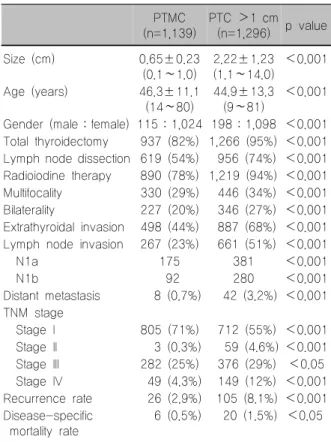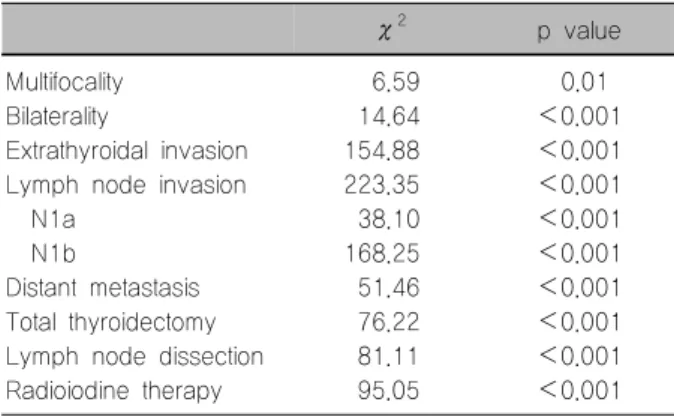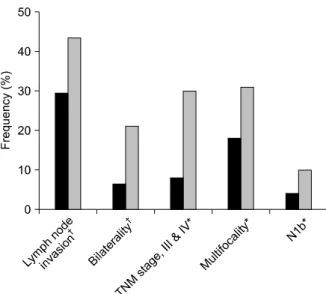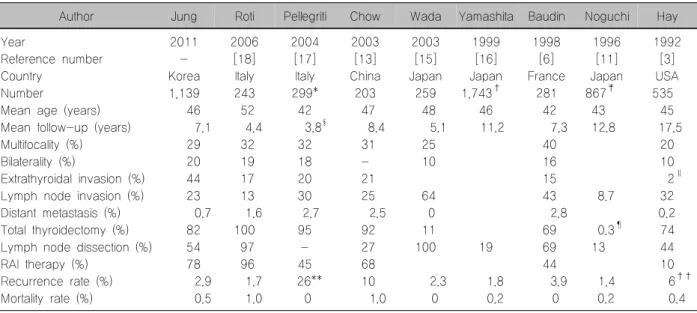Tumor Size Is Still a Useful Prognostic Factor for the Therapeutic Plan of Papillary Thyroid Carcinoma
전체 글
수치




관련 문서
International consensus guidelines for management of intraductal papillary mucinous neoplasms and mucinous cystic neoplasms of the pancreas.. Pancreatology : official journal
Post-surgical use of radioiodine (131I) in patients with papillary and follicular thyroid cancer and the issue of remnant ablation: a consensus
1 John Owen, Justification by Faith Alone, in The Works of John Owen, ed. John Bolt, trans. Scott Clark, "Do This and Live: Christ's Active Obedience as the
International consensus guidelines for management of intraductal papillary muci- nous neoplasms and mucinous cystic neoplasms of the pancreas.. Pancreatology : official journal
The purpose of this study was to compare the remineralization effect of Silver Diamine Fluoride (SDF) on demineralized enamel over time with those of fluoride varnish..
Cooper, M.D.et el Revised American Thyroid Association Management Guidelines for Patients with Thyroid Nodules and Differentiated Thyroid Cancer THYROID Volume
Objective: The purpose of this study was to analyze recent trend in incidence of basal cell carcinoma and squamous cell carcinoma in patients from the Gwangju City
The objective was to access the prevalence of asymptomatic thyroid disease not only thyroid nodules but diffuse thyroid disorders by using ultrasonography